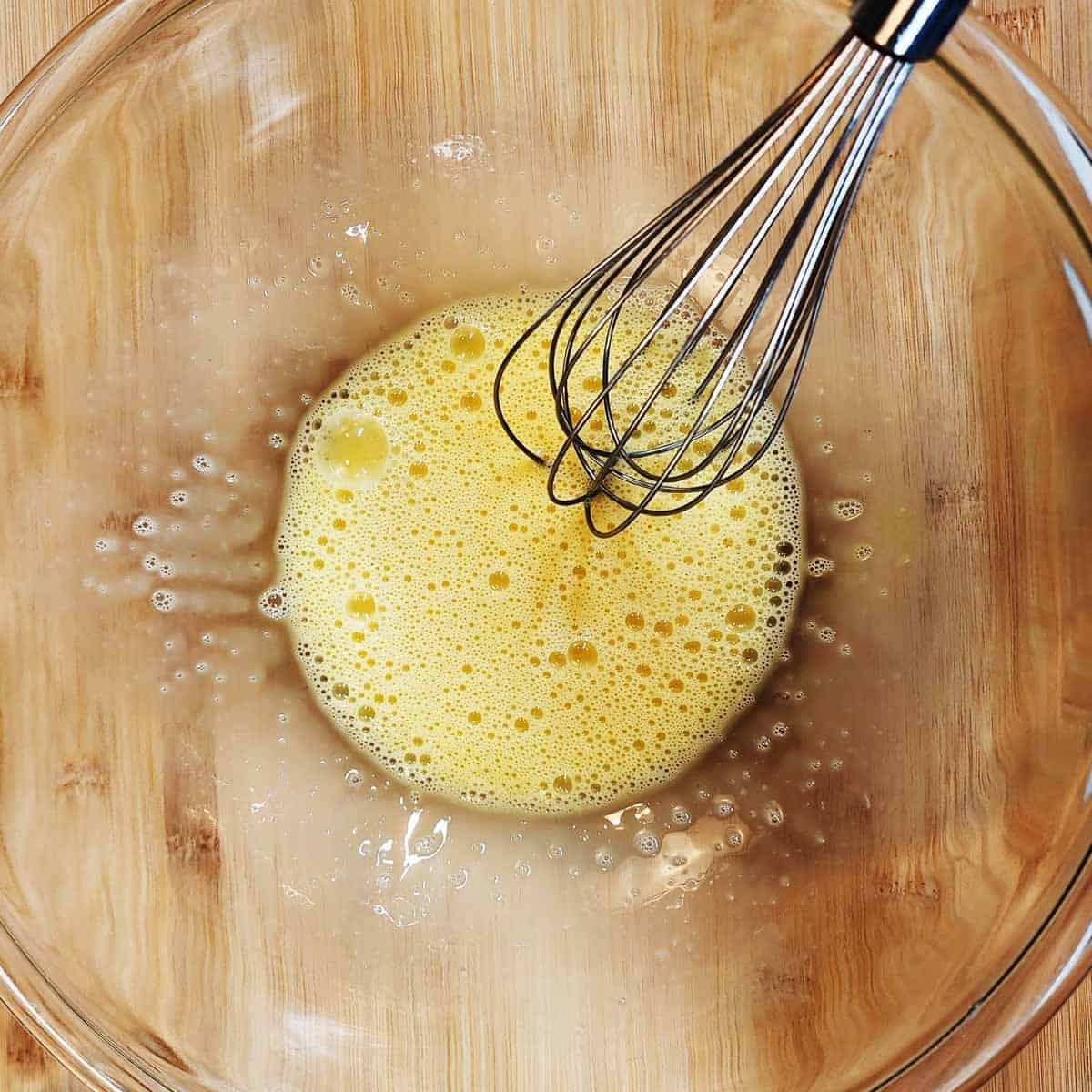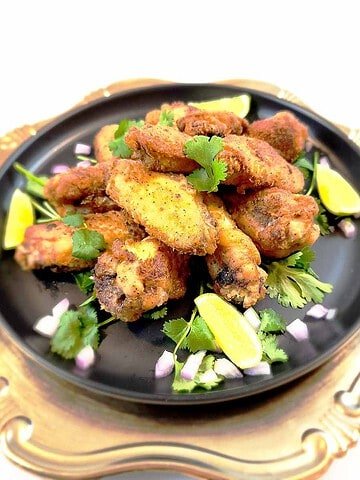Quick Answer
The Thai Pumpkin Custard Recipe (Sang Kaya Fak Thong) is a traditional Thai dessert made by steaming coconut egg custard inside a hollowed pumpkin. The custard's silky texture contrasts with sweet pumpkin flesh, creating a comforting and elegant dessert. After many tests, I found that vanilla extract enhances coconut's sweetness without overwhelming traditional flavors.
Pin this authentic Thai recipe for later!

Thai Pumpkin Custard (Sang Kaya Fak Thong)
Ingredients
- 1 cup pumpkin puree canned or fresh
- 1 cup coconut milk
- ½ cup palm sugar
- 3 eggs
- ¼ teaspoon salt
- ½ teaspoon vanilla extract
Instructions
- Prepare the Custard Mixture: In a saucepan, combine the pumpkin puree, creamy coconut milk, and aromatic palm sugar. Heat the mixture gently over medium-low heat, stirring occasionally, until the palm sugar fully dissolves. This step infuses the coconut milk with the pumpkin's natural sweetness, creating a flavorful base for the custard. Once dissolved, remove the saucepan from heat and allow the mixture to cool slightly, enhancing its texture and flavors.
- Whisk Eggs: While the pumpkin mixture cools, take a separate bowl and whisk the eggs thoroughly. Add a pinch of salt for balance and a hint of vanilla extract to enhance the custard's fragrance and complexity. Whisk until the eggs achieve a smooth consistency, ensuring they are well incorporated for a uniform texture.
- Combine and Blend: Slowly pour the cooled pumpkin mixture into the bowl of whisked eggs, stirring continuously to prevent the eggs from curdling. This gradual incorporation blends the creamy pumpkin-infused coconut milk with the eggs, ensuring a smooth, velvety custard base that captures the essence of Thai dessert tradition.
- Strain for Smoothness: For a silky texture, strain the custard mixture through a fine sieve into a heatproof dish or individual ramekins. This step removes any lumps or solid particles, ensuring the custard is impeccably smooth and pleasing to the palate.
- Steam to Perfection: Place the dish(es) in a steamer over medium heat. Steam gently for approximately 30-40 minutes or until the custard is set with a slight jiggle in the center when gently shaken. This gentle cooking method allows the custard to set evenly without overcooking, preserving its delicate texture and flavors.
- Cool and Serve: Once steamed, remove the custard from the heat and allow it to cool to room temperature. Serve Sang Kaya Fak Thong chilled or at room temperature, allowing its flavors to meld and develop. Top with a little toasted coconut or a drizzle of coconut cream for an extra treat.
Video

Notes
Nutrition
What's in this Sang Kaya Fak Thong post


Why You'll Love This Thai Custard Recipe
Sawasdee Kha, and Hello
This Thai Pumpkin Custard recipe captures the essence of my childhood in Thailand, where my grandmother would prepare this dessert for special family gatherings. After testing this recipe 6 times while developing my upcoming cookbook, I've perfected the balance of sweetness and texture that makes authentic Sang Kaya Fak Thong irresistible.
The precise steaming technique sets this recipe apart – something I learned watching my mother carefully monitor the water level and heat. You'll achieve that perfect custard consistency – firm enough to hold its shape when sliced, yet trembling with silky tenderness when a spoonful meets your lips.
Version 3 of this recipe finally nailed the palm sugar ratio that delivers authentic caramel notes without overwhelming the delicate pumpkin flavor. The nostalgic aroma will transport you directly to the bustling markets of Thailand. Share this recipe with friends who appreciate authentic Thai desserts!

Step-by-Step: Visual Recipe Guide
Ingredients
The soul of this Thai Pumpkin Custard recipe lies in quality ingredients that work harmoniously together. Fresh coconut milk is essential – I recommend avoiding low-fat versions as they lack the richness needed for proper setting. Traditional palm sugar contributes caramel notes that refined sugar cannot replicate, though coconut sugar makes a reasonable substitute. The pumpkin variety matters significantly – select one with ideal sweetness and texture that complements the custard, with a flavor profile reminiscent of countryside recipes from my mother's Korat traditions.

Prepare the Custard Mixture
PPrepare Your Pumpkin Base: Cut a medium-sized pumpkin horizontally about one-quarter from the top. Scoop out the seeds and stringy flesh, creating a clean interior cavity. After testing various hollowing techniques, I've found that a metal spoon with a slightly sharp edge works better than plastic tools, providing just enough edge to clean the interior without damaging the flesh. The sound of scraping should be gentle – if you hear a scratching noise, you're pressing too hard.

Whisk Eggs/Combine Mixtures
Create Your Custard Mixture: In a saucepan over medium-low heat, combine pumpkin puree, coconut milk, and palm sugar, stirring gently until the sugar fully dissolves. After developing numerous versions of my Beach Shack Sauces products, I discovered that keeping the temperature below a simmer prevents the coconut milk from separating. The mixture transforms from opaque to slightly translucent as the sugar dissolves, with a subtle sheen developing across the surface.
Perfect the Egg Mixture: In a separate bowl, whisk eggs thoroughly with salt and vanilla extract until they reach a uniform pale yellow color. The consistency should be smooth enough that when you lift the whisk, the mixture falls in a continuous ribbon that disappears into the surface within 1-2 seconds. This indicates proper incorporation – a technique my grandmother taught me that ensures the custard sets evenly during steaming.
Combine with Precision: The critical moment arrives when combining the mixtures. Pour the cooled pumpkin-coconut liquid into the eggs steadily while whisking continuously. You'll feel the mixture thicken slightly against your whisk—this tactile feedback tells you you're incorporating correctly. I've found that pouring too quickly results in curdling, a mistake I repeatedly made during early testing for my cookbook.


Strain and Pour/Steam the Custard
Strain for Silky Perfection: Pour the combined mixture into your prepared pumpkin cavity through a fine-mesh sieve. This step, which I added in version 2 of this recipe, eliminates any tiny lumps or egg chalazae that would disrupt the custard's perfect texture. The straining should happen without force – the mixture should flow through with minimal assistance, leaving behind only small solids.
Steam with Care: Place your filled pumpkin in a steamer over medium heat with the water at a gentle simmer. The steaming environment should feel like a warm, humid day in Thailand – with gentle wisps of steam but never a rolling boil. After 35-40 minutes, test for doneness by inserting a knife near the center – it should emerge mostly clean with a slight coating. When perfectly done, the custard jiggles subtly at the center when gently shaken, resembling the slight trembling of coconut jelly.
Print this recipe for your collection!


Cool and Serve
Once cooked, remove the custard from the steamer and let it cool to room temperature. Serve chilled or at room temperature, garnished with toasted coconut or a drizzle of coconut cream if desired.

What Makes Thai Pumpkin Custard Recipe Special?
Common Thai Custard Mistakes to Avoid
The most common pitfall is overheating the coconut milk, which causes separation and a grainy texture. During my certification training as a Nutrition Coach, I learned that keeping temperatures below 180°F preserves the emulsion. Secondly, oversteaming toughens the custard – look for that signature slight jiggle in the center. Finally, resist the urge to substitute regular sugar for palm sugar; the distinctive caramel notes are essential to authentic flavor development.
Flavor Profile: Sweet, Creamy, Aromatic Notes
This Thai Pumpkin Custard recipe delivers a symphonic flavor experience that unfolds in delightful stages. You'll first notice the subtle sweetness of the pumpkin, which provides an earthy foundation. This is quickly followed by the creamy richness of the coconut custard, with its velvety mouthfeel coating your palate.
The flavor profile includes:
- Sweet earthiness from the fresh pumpkin flesh
- Creamy richness from full-fat coconut milk
- Caramel notes from traditional palm sugar
- Subtle vanilla undertones that enhance without overwhelming
- Balanced saltiness that elevates the sweetness
This dessert pairs beautifully with strong Thai iced tea, which provides a pleasant tannic contrast to the custard's richness. For a complete Thai dessert experience, serve alongside fresh mango sticky rice or crispy banana fritters. When entertaining, I often serve small portions with fresh ginger tea, allowing the spicy warmth to complement the custard's coolness.
Don't forget to rate this recipe if you try it!
Expert Tips for Authentic Sang Kaya Fak Thong
When I founded Beach Shack Sauces, I learned the importance of proper emulsification techniques, which directly apply to achieving perfect custard texture. After testing this recipe 12 times, I found that allowing the pumpkin-coconut mixture to cool to about 120°F before adding to the eggs prevents curdling. You'll feel resistance when whisking if the mixture is too hot – a physical indicator I discovered during version 4 testing.
If using a different squash variety, adjust your steaming time – butternut requires about 5 minutes longer than kabocha due to its higher water content. My bamboo steamer produces the most consistent results, but any steamer works if you maintain steady heat. The custard continues setting as it cools, so don't panic if it seems slightly loose when first removed from heat. This technique resembles the ones I share in my "Complete Guide to Thai Custards" on the blog.
More Thai Recipes You'll Love
If you enjoy this Thai Pumpkin Custard recipe, you'll adore my Mango Sticky Rice with Coconut Cream, which uses the same coconut steaming principles but pairs them with fresh mangoes. My Thai Tea Panna Cotta fuses the Italian technique with Thai flavors in a stunning make-ahead dessert. For something less sweet, try my Savory Thai Coconut Pancakes (Kanom Krok), which use similar egg-coconut ratios in a different application. The Tapioca Pearl Dumplings in Sweet Coconut Milk showcase another beloved Thai dessert technique, while my Crispy Banana Fritters with Palm Sugar Syrup make the perfect companion to this pumpkin custard for a complete Thai dessert experience.
I'd love to hear your experience with this recipe in the comments!
Thai Custard FAQs: Your Questions Answered
Can I make Thai Pumpkin Custard ahead of time?
Yes, you can prepare Thai Pumpkin Custard up to 2 days ahead. Steam as directed, then cool completely before covering and refrigerating. The texture improves after resting overnight as the flavors meld beautifully. Serve chilled or bring to room temperature before serving.
Is there a substitute for palm sugar in Sang Kaya Fak Thong?
Coconut sugar is the best substitute for palm sugar, offering similar caramel notes essential to authentic flavor. Brown sugar works in a pinch but lacks the complex undertones. During recipe testing, I found that regular sugar resulted in a one-dimensional sweetness missing the traditional depth.
Can I use butternut squash instead of kabocha?
Yes, butternut squash works well, though the flavor will be slightly less sweet than traditional kabocha. Adjust by adding an extra tablespoon of palm sugar to the custard mixture. The texture differs slightly, with butternut producing a smoother result than some of my cookbook recipe testers preferred.
Why did my custard curdle during steaming?
Curdling typically occurs when the eggs are exposed to heat too quickly. Ensure your pumpkin mixture has cooled sufficiently before combining it with eggs, and maintain a gentle simmer, never a boil, during steaming. This was the most common issue reported by readers trying their first Thai steamed custard.
How do I know when the Thai pumpkin custard is perfectly done?
When gently shaken, the perfectly steamed custard should have a slight jiggle in the center—similar to set gelatin. A knife inserted near the center should come out mostly clean with a slight coating. If the knife emerges completely dry, the custard is overcooked and may have a grainy texture.
Sign up for my newsletter to receive more authentic Thai dessert recipes in your inbox!
Tag me in your Thai dessert creations on Instagram @SusieCooksThai!






Leave a Reply